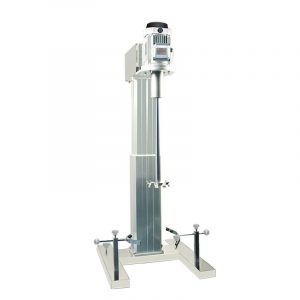What is the reason why the high-speed disperser can only rise but not fall?

The fact that the disperser can only rise but not fall is usually determined by its design and working principle. Here are some possible reasons:
Liquid discharge: The disperser discharges the liquid through the discharge port during the working process to achieve the purpose of dispersion and mixing. The liquid is generally discharged from the disperser by gravity, so it can only be raised, but not lowered.
Equipment structure: The design of the disperser is usually based on the principle that the liquid enters from the upper part, after stirring and dispersing, discharges from the lower part. The structure and construction of the device limits the direction of the liquid flow so that it can only flow from the top down and cannot flow in reverse.
What is the reason why the high-speed disperser can only rise but not fall?
Stirring device: The stirring device of the disperser is usually designed to stir and disperse the liquid from the upper part down to achieve the effect of mixing and dispersing. This design restricts the flow direction of the liquid so that it cannot flow in the opposite direction.
It should be noted that there may be differences between different types and designs of dispersers, and some dispersers may have lifting and lowering functions. Therefore, in specific cases, it is necessary to refer to the operating manual of the disperser or communicate with the manufacturer to understand the functions and limitations of that particular disperser.
If you need to achieve liquid reduction during dispersion, you may want to consider other equipment or methods, such as using a pump or gravity flow system for liquid delivery and reduction. This depends on the specific application requirements and process requirements.
